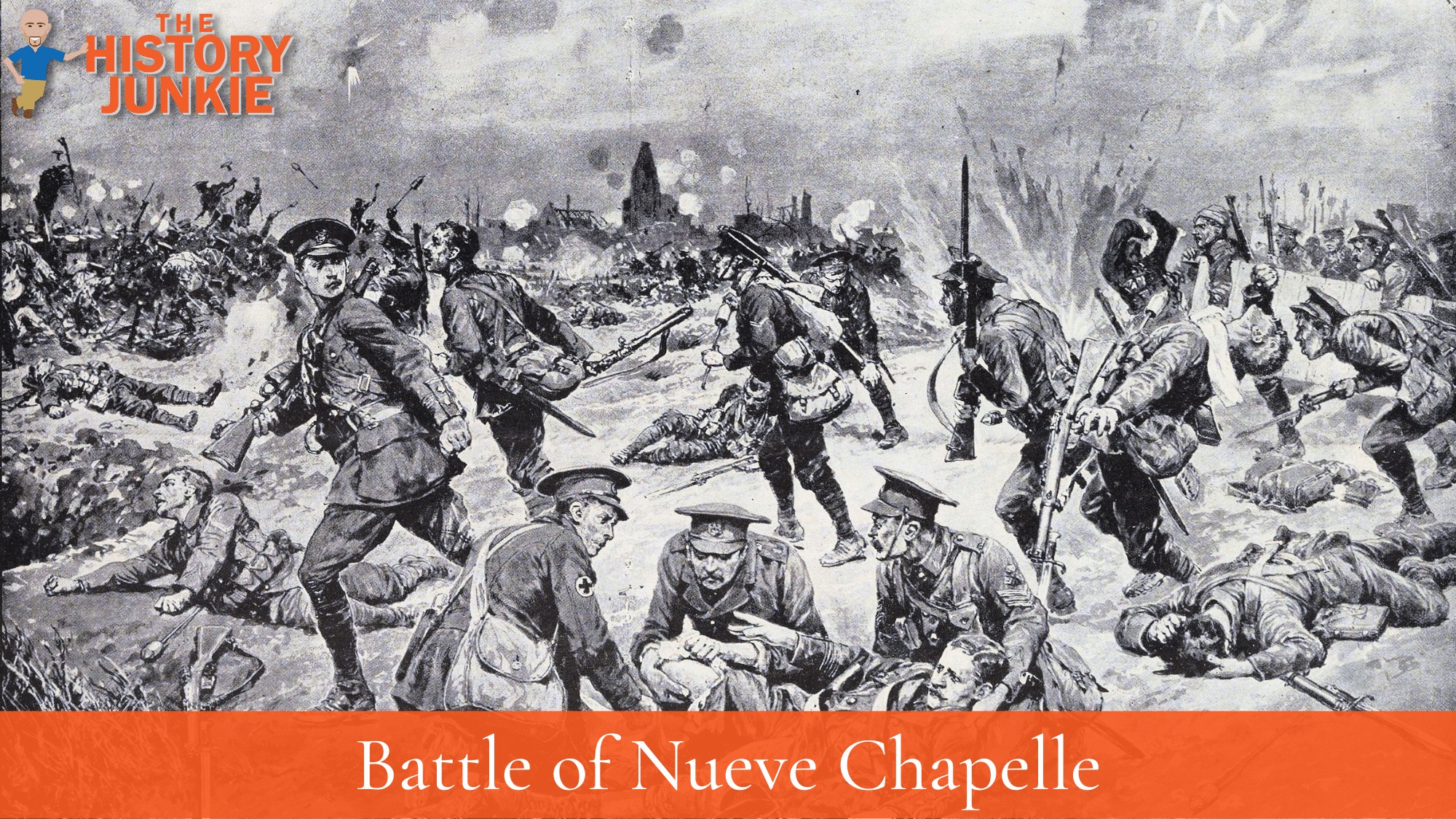The Battle of Neuve Chapelle was a British offensive action fought on the Western Front during World War I. It took place between March 10 - 13, 1915, and was the first major offensive action undertaken by the British Expeditionary Force (BEF) since the First Battle of Ypres in October 1914.

The battle was fought in the Artois region of France and was intended to be a diversionary attack to support the French offensive at Champagne.
Jump to:
The Fighting
The British commander-in-chief, Sir John French, hoped to break through the German lines and capture the village of Neuve Chapelle.
The British attack was preceded by a 35-minute artillery bombardment, which was the heaviest bombardment yet seen on the Western Front.
The bombardment was followed by an infantry assault, which made initial gains and captured Neuve Chapelle. However, the British advance was soon halted by German machine gun fire.
The battle continued for three days, but the British were unable to break through the German lines.
The British suffered heavy casualties, with over 11,000 men killed or wounded. The Germans also suffered heavy casualties, with over 10,000 men killed or wounded.
The Battle of Neuve Chapelle was a tactical victory for the Germans, as they were able to hold their ground against the British attack.
Conclusion
The Battle of Neuve Chapelle also had a significant impact on the development of warfare. The battle was the first to use tanks in combat, and it also saw the first use of aircraft to direct artillery fire.
The battle also showed the importance of artillery in modern warfare, and it led to a significant increase in the production of artillery shells by the British.
The Battle of Neuve Chapelle was a costly battle, but it was also a significant victory for the British. The battle showed that the BEF was capable of mounting successful offensive operations, and it helped to pave the way for the later victories at the Somme and Passchendaele.
Here are some additional details about the battle:
- The British forces were led by General Douglas Haig, who would later go on to command the BEF during the Battle of the Somme.
- The German forces were led by Crown Prince Rupprecht of Bavaria.
- The battle was fought on a front just short of 2 miles.
- The British used a total of 342 guns in the artillery bombardment.
- The British suffered about 11,200 casualties, including 7,000 killed.
- The Germans suffered about 10,000 casualties, including 5,000 killed.
- The battle was a tactical victory for the Germans but a strategic victory for the British.
The primary factor of this battle was the effectiveness of artillery, which resulted in more production, as was mentioned previously.
